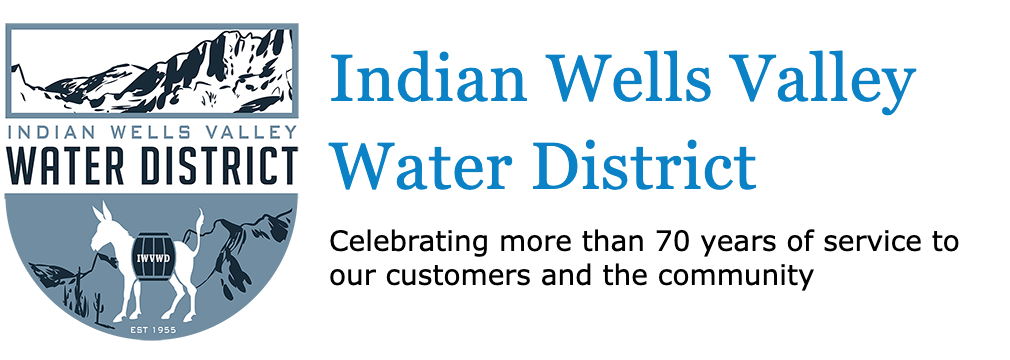Mar 18, 2021 | Achieving Water Sustainability Comes at a Cost
By Don Zdeba
By now you will have received the initial bill from the Water District (“District”) that includes a line entitled “GA Fees”. Due to limited spacing available on our bill, the total listed includes the Groundwater Extraction, or “Pumping”, Fee, and the Replenishment Fee. The Groundwater Extraction Fee, adopted by the Indian Wells Valley Groundwater Authority (“GA”) by way of Ordinance 02-18 on July 19, 2018, requires non de minimis pumpers within the basin, those pumping more than 2 acre-feet for domestic purposes, to pay a fee for each acre-foot (approximately 326,000 gallons) of water they pump. The fee was initially established at $30 per acre-foot but was subsequently raised to $105 with approval of Ordinance 02-20 effective September 1, 2020. This fee is charged to District customers at the rate of $0.24 per hundred cubic foot (HCF) of use. HCF is the standard billing unit used by the District and equates to 748 gallons.
The Replenishment Fee that became effective January 1st was established by the GA with Ordinance 03-20 approved August 21, 2020. This fee applies to all groundwater pumpers within the basin, except for Federal and de minimis pumpers, that exceed their allotted pumping provided within the Ordinance. The fee is set at $2,130 per acre-foot. The fee is comprised of $2,112 toward the purchase of an imported water supply through a State Table A Entitlement and $17.50 for mitigating damage to shallow wells. Based on District pumping and consumption data from 2020, this fee was set at $1.70 per HCF. The two fees combined amount to $1.94 per HCF for District customers.
Depending on individual practices, the impact of these fees on your bill may not be noticeable during the winter months. However, as temperatures climb and water uses include landscaping and evaporative cooling, the resulting increase due to these fees will be noticeable. I suggest you use the Bill Calculator feature on our website (www.iwvwd.com) to see what you can expect. Once on our home page, click on the “Bill Calculator” button located on the right side. Once there, make sure “Residential” is checked appropriately, then check the appropriate meter size and zone. These are located on your bill, but generally would be ¾” meter and A-zone for most residential customers. Finally, enter the amount of water you would consume in a month in HCF and click on “Calculate”. You will be able to see what your basic bill is and the effect of both fees on the total.
I do want to emphasize the fees enacted by the GA are not a source of revenue for the District but are passed on to the GA. To raise awareness of the fees, I previously wrote about the expected impact in a column published in both the Daily Independent and News Review and posted on our website in September. We have since done outreach through messaging on our bills and our Facebook page.
The reality is the days of cheap water have come to an end. On both the local and regional scale, the combined effects of climate change, extended drought, declining groundwater aquifers, population growth, and other factors will without doubt increase competition to acquire sufficient water resources to meet demand thereby driving up the cost of water throughout the arid west. This is already being manifested along the Colorado River, a source providing water to seven states, including California, and northern Mexico. The reservoirs at Lake Mead and Lake Powell are experiencing historic low water levels.
The Groundwater Sustainability Plan for the Indian Wells Valley submitted January 31, 2020 is currently under review by the Department of Water Resources. It is intended to provide a roadmap to achieve sustainability for our basin. There is no single silver bullet that will achieve sustainability and the projects to get us there will come at a cost.
I encourage you to be engaged in water issues by visiting our Facebook page (IWV Water District), our website, and the website for the GA (www.iwvga.org).
